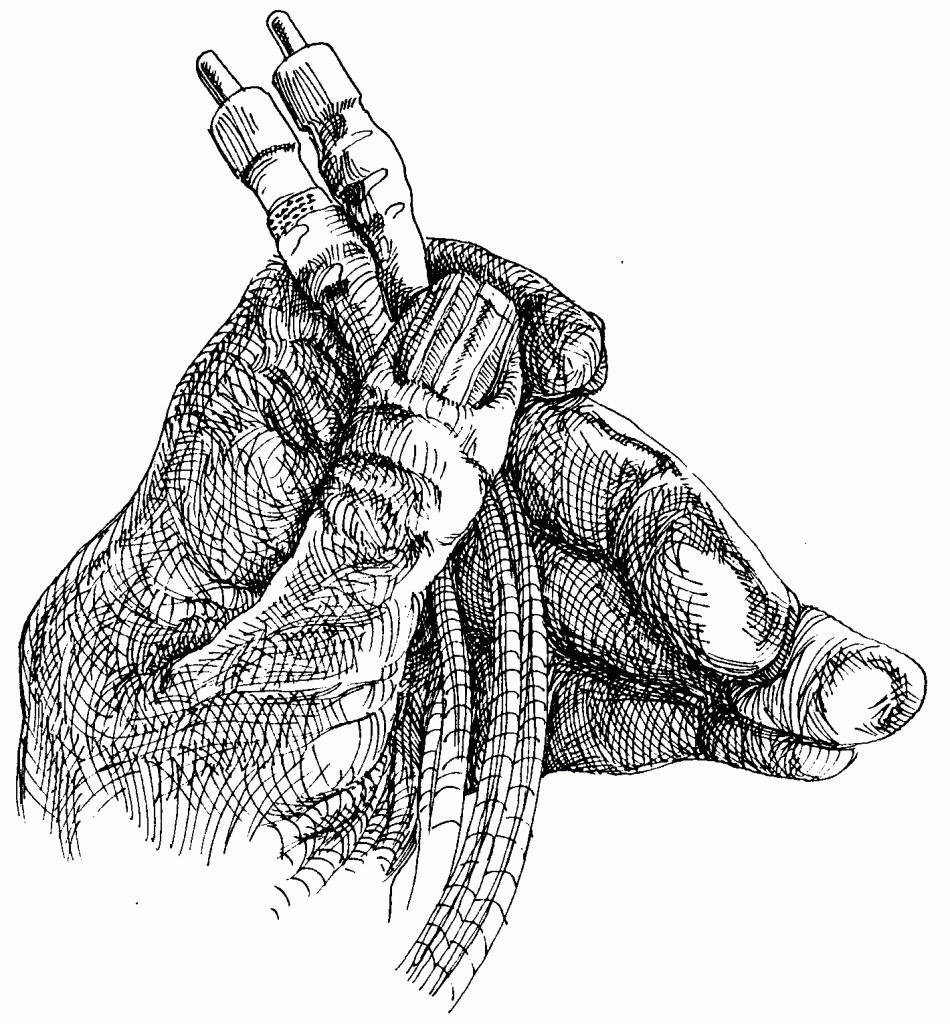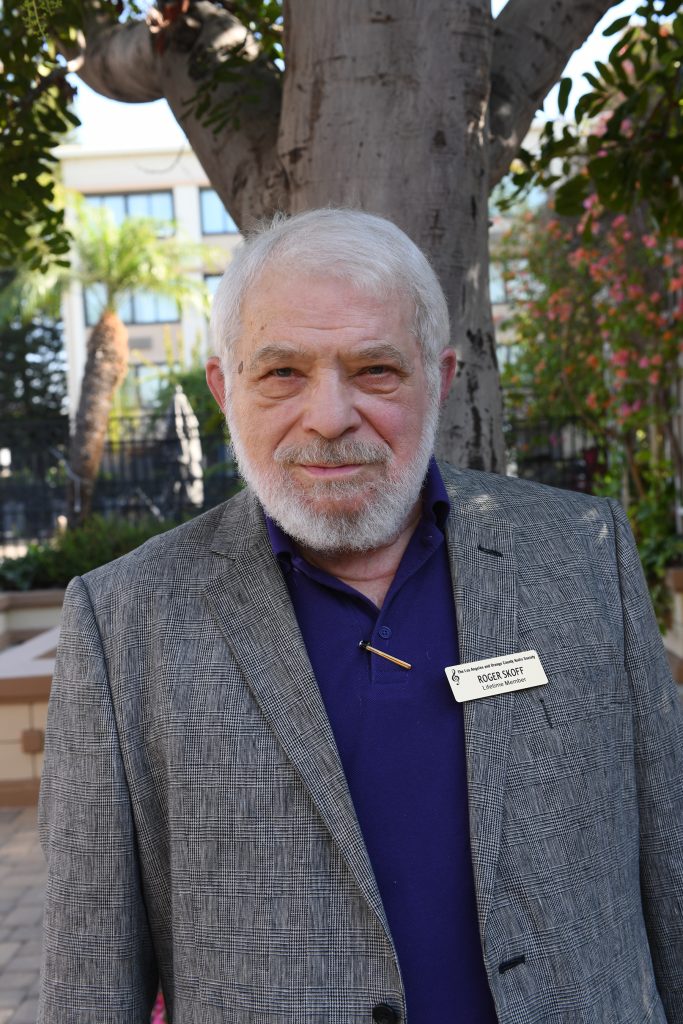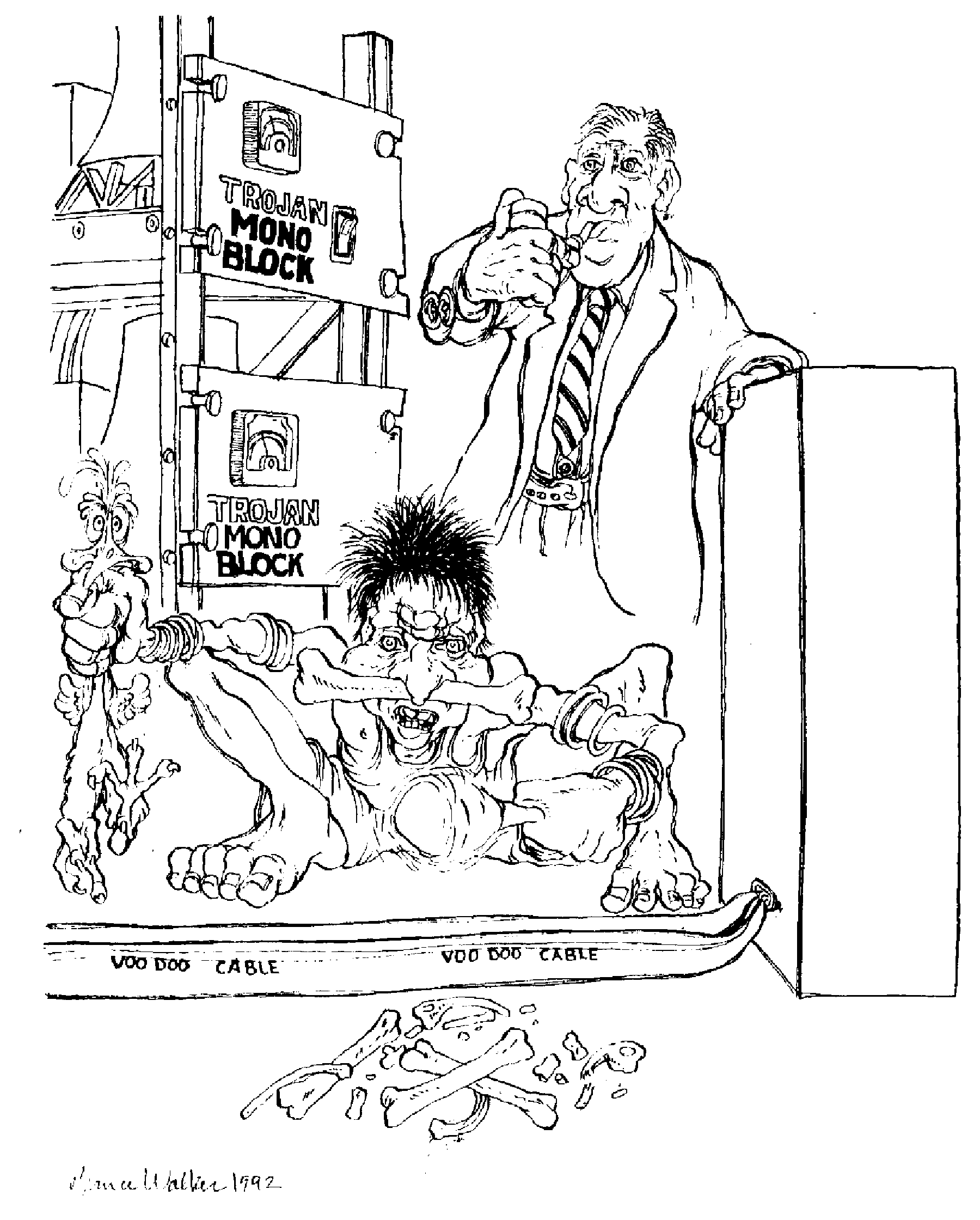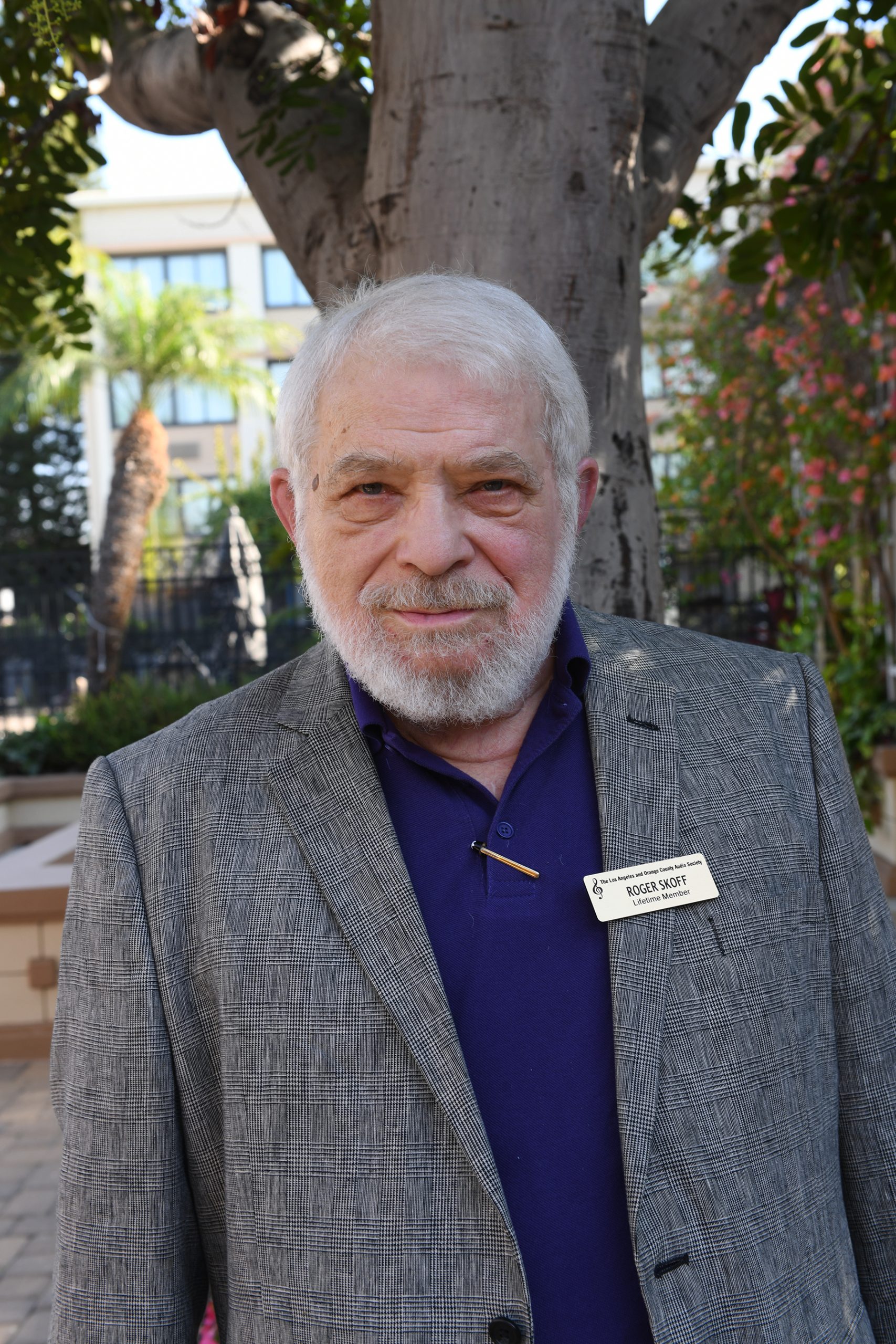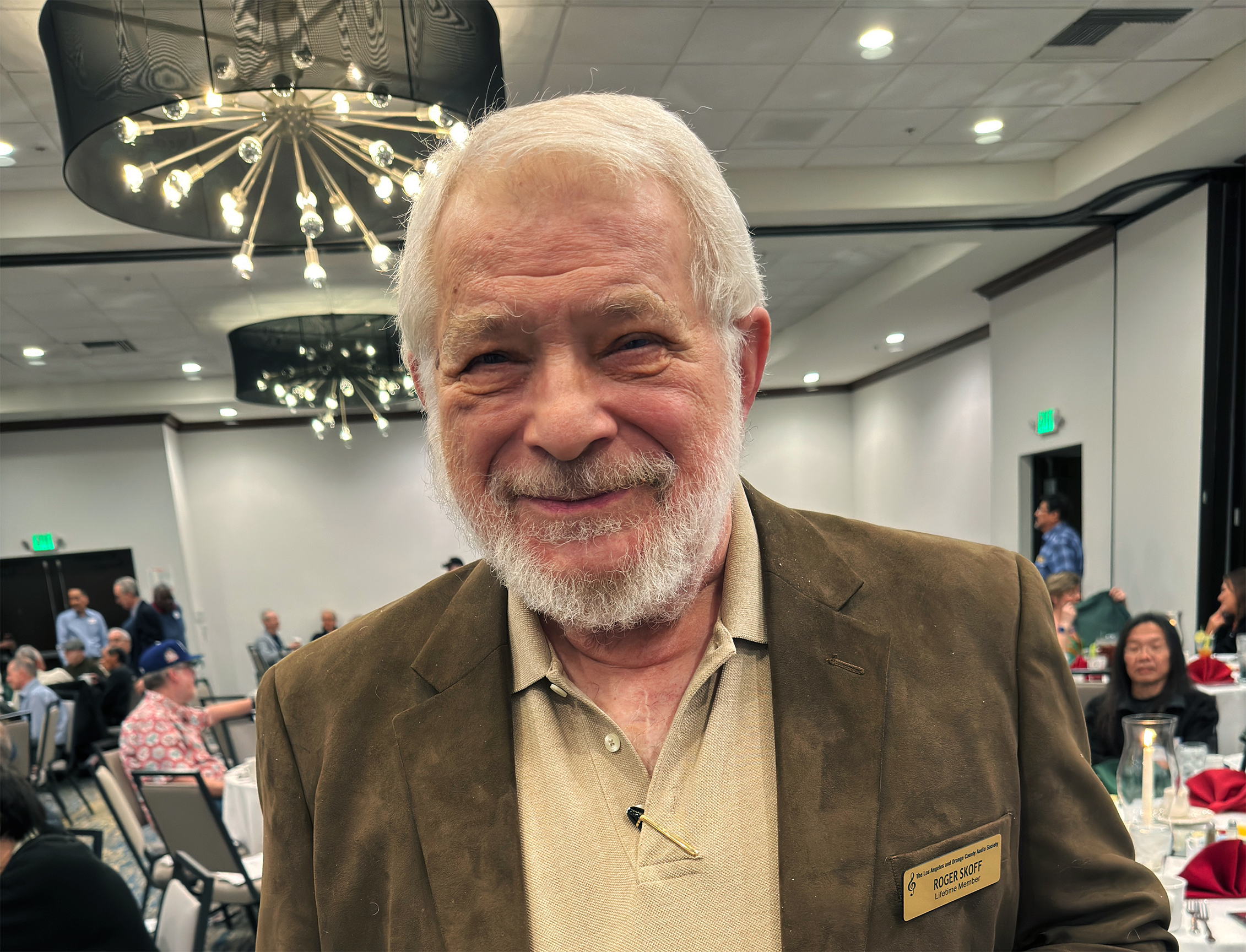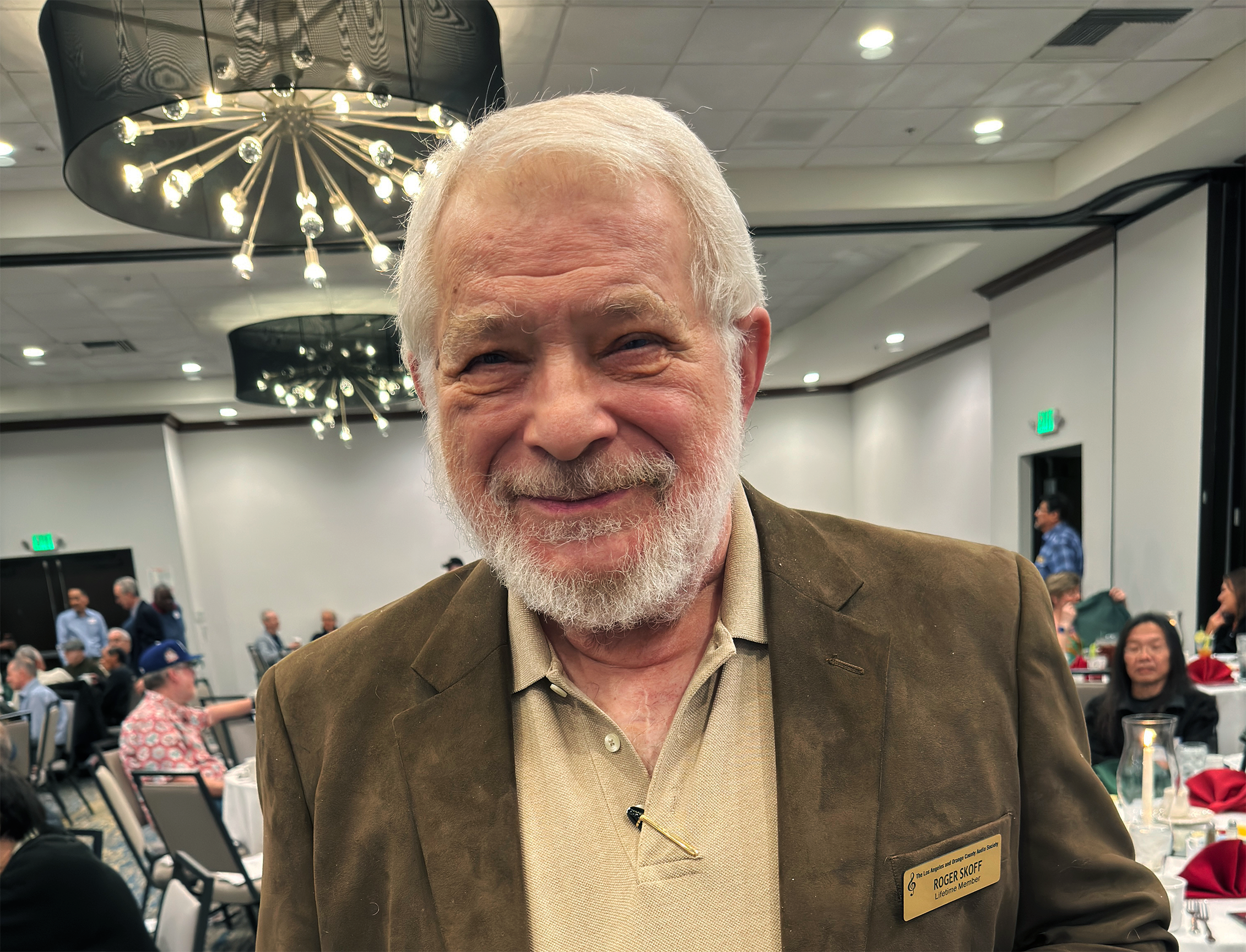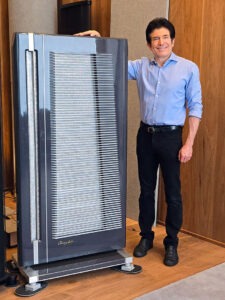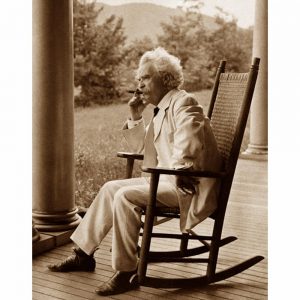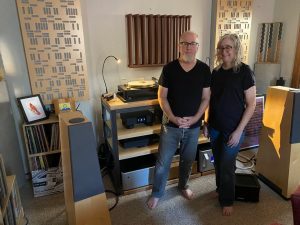Roger Skoff writes about the ongoing war over cables and what really matters
Roger Skoff at the LAOC Audio Society Gala Banquet, 2018: a portrait by David W. Robinson
I've said it before, and you've seen it before: We audiophiles, unlike any other group of fans or hobbyists that I know of, are always at war with ourselves—in person, in the paper press, and on the internet—over even the most basic aspects of our hobby. Car Crazies, Camera Crazies, Sports fans, and other groups certainly do argue about which cars, which players, or which things are better, but nowhere other than among audiophiles ("HiFi Crazies," as I and my friends prefer to call ourselves) will you ever find people arguing about whether or not things are different.
We do that, and we've been doing it for a very long time. You've heard it yourself, or read about it, and the back and forth is always: "All ______ (take your pick) sound the same" or "______ (take your pick again) can't possibly make a difference", and the responses are always "Yeah, but I heard a difference" or "No, it's a placebo effect," and "If you can't measure it or double-blind test it, it's not there."
That kind of thing has been common with audio products over the years. Not even mentioning the everlasting "team" disputes like whether analog is better than digital or tubes are better than solid-state, the things we've argued about have included amplifiers (Do they sound different?); mysterious "stick-ons"—discs, bowls, and other things to be placed on our equipment or in and around our listening rooms (Do they work? Can they work?); cable lifters (same thing); everything to do with power (power conditioners, "magic" clocks, AC vs. battery power supplies, accessory power cords, etc.); various "treatments", including cryogenic freezing, marking CDs with a green or purple pen; and whole panoplies of Peter Belt, Bedini, and other more recent toys and goodies; all of which have claimed—as if by magic—to transform the sound of our systems.
The one thing, though, that seems to be most consistently (and insistently) under attack is cables. Whether speaker cables, interconnects, headphone or USB cables, or cables for any other purpose, the whole concept of wire as having an effect on the sound of our systems seems hard for many people to accept—even some of the most educated and practiced among us.
Among the doubters have been the AES (Audio Engineering Society), EEs (Electrical Engineers), and even a goodly number of High End equipment designers and manufacturers (not to be named here to preserve our friendship), all of which or whom believe (as they were educated to do) that the only factors determining cable performance are resistance (R), capacitance (C), inductance (L), and characteristic impedance (Z0), and that any audible difference in cables can only be the result of one of those or of physical damage, poor connection, or poor construction.
If you've read my article "Electrical Engineering and the High End" in The Absolute Sound (March, 2015), you know that electrical engineering was originally developed by the telephone company and that its orientation (as would be expected from the telephone company) is toward understanding and dealing with the performance and attributes of cables miles or hundreds of miles long. As an audiophile, you also know that, for our purposes, even just 50 feet is an extremely long length. And you may be aware, too, that designers of cable for audio are faced with an entirely different set of motivating concerns.
At this point, I need to say something: I am one of those designers. For many years, I was the owner of, and designer for XLO, a company whose cables were recognized everywhere by its slogan (actually awarded by reviewers) of "The Best in the World." I do believe that cables sound different and that they can—if they're NOT as good as the rest of your gear—make even the most expensive or otherwise best-selected and best-executed system fail to deliver its true potential. You should also know that it was I who first designed cables to optimize the relationship between the electromagnetic and electrostatic fields always present in any cable passing signal; who first made the U.S. audio cable industry aware (in a 1995 Stereophile interview) of the importance of capacitive discharge effects on the sound of a system; and who, more than thirty years ago (well before Eichmann), first designed and stressed the importance of low-mass connectors.
In short, I'm either a bit of an expert or an outright nut case. Read on and decide for yourself.
One more thing, before I continue: I'm not saying that the standard engineering issues of R, C, and L don't apply—although Z0 and some others of the standard considerations really may not—but that, for audio applications, other considerations become much more critical.
For example, much is made of silver as a conductor because of its highest-of-all-metals conductivity and correspondingly lower resistance. Resistance, as a matter of fact, was the major reason for the downfall of Edison's original system of electrification and its replacement by Tesla's: The electrical current Edison was supplying was DC (direct current), and greatly subject to high (and economically devastating) resistive loss over miles-long lines. Tesla's AC system was much less so and, largely because of that, ultimately won out. A music signal, too, is AC and less subject to resistance, but even if it weren't, silver is only nine percent less resistive than copper (a generally insignificant figure, except in coordination with others), and we can usually compensate for whatever small advantage it might offer by just using shorter (and cheaper) copper wires or wires of a slightly larger AWG (American Wire Gauge) size.
Impedance matching—another subject favored by the engineering set—is, in fact, impossible in the great majority of audio circuits. Although balanced circuitry (using 3 conductors and XLR connectors) is the norm in many or even most pro-audio, broadcast, and recording applications, and seems to be growing—to at least some degree—in popularity for higher High End audio systems, the overwhelming majority of the equipment that audiophiles buy still uses what we call "unbalanced" or "single-ended" circuitry.
Unlike a balanced circuit, where output and input impedances are matched (usually at somewhere between 50 and 600 Ohms) and carried by a matched-impedance cable, unbalanced circuits are normally "loaded"—meaning that the "source" component has a low output impedance (often in the 50 to 250 Ohm range) and the "load" component (where the output from the source is going) has an input impedance of anywhere (typically) from 10,000 to 100,000 Ohms. With that being the case, how can you match impedances? Which impedance should you match?
I've even heard manufacturers of speaker cables proudly boast that their products are designed for a characteristic impedance of "exactly 8 Ohms" or "exactly 4 Ohms" to match the speakers that they will be used with. So what? In fact, every amplifier that claims any damping factor greater than 1 has an output impedance lower than the nominal impedance of the speaker it's driving, and virtually every loudspeaker's impedance (except some few of the "planar magnetics") varies wildly with frequency, usually showing a distinct impedance peak (of as much as 60 Ohms) at their system resonance frequency and other impedance variations at and around (for systems of more than one driver) their internal crossover frequencies.
Then there's "characteristic impedance"—"the impedance of a uniform alternating-current transmission line of indefinite length (as a long telephone cable) measured at the input end where the voltage is applied" (www.merriam-webster.com). For digital and RF (radio frequency) signals, this is of major importance, and can, if the length of the cable is a significant percentage of the length of the waveform to be carried, present real problems. (Problems of characteristic impedance were among the factors that impeded the telephone company's early growth, until it invented electrical engineering to find an answer). For audio frequencies, though, (20Hz to 20,000Hz), the signals carried (for example, from our analog sources to our analog electronics and then to our speakers), characteristic impedance is simply of no importance.
Here's why: Electrical signals travel through cables (any cables) at a high percentage (75 to 99%) of the speed of light—three hundred million (300,000,000) meters per second. (!) To calculate the wavelength of any electrical signal (assuming, for convenience, that it's actually traveling at 100% of the speed of light) all we have to do is to divide 300,000,000 by that frequency. So a frequency of 20kHz, for example, the top of the audio range, would be 15,000 meters long (300,000,000 ÷ 20,000 = 15,000). That's right; it would be 15 kilometers, or about 9 1/3 miles (actually 9.32057) long. Not a long length for a telephone wire, perhaps, but vastly longer than anybody could ever conceive of using at home.
Or, to look at it from the other side, in order to get the signal's wavelength down to just one meter—the length we most commonly use at home (as Hi-Fi interconnects), we would have to be talking about a frequency of 300 megahertz—the lower end of the operating range for a microwave oven! (https://en.wikipedia.org) Depending on the actual frequency and the actual length of the cable, characteristic impedance problems can certainly start popping-up at much lower frequencies and cable lengths than microwave and miles, but it's safe to say that, for a signal at audio frequencies passing through a cable only a few meters long, characteristic impedance (Z0) isn't a problem we need to worry about.
The four classical characteristics that engineers talk about as being "the only things that matter" in cable design are R, C, L, and Z0. Of those, all except Z0 do have an important place in the design of audio cables, but they are not the only things that matter.
I'll write about some of those other things in Part 2 of this article, coming soon.
Photograph and image processing by David W. Robinson; cartoon by Bruce Walker





